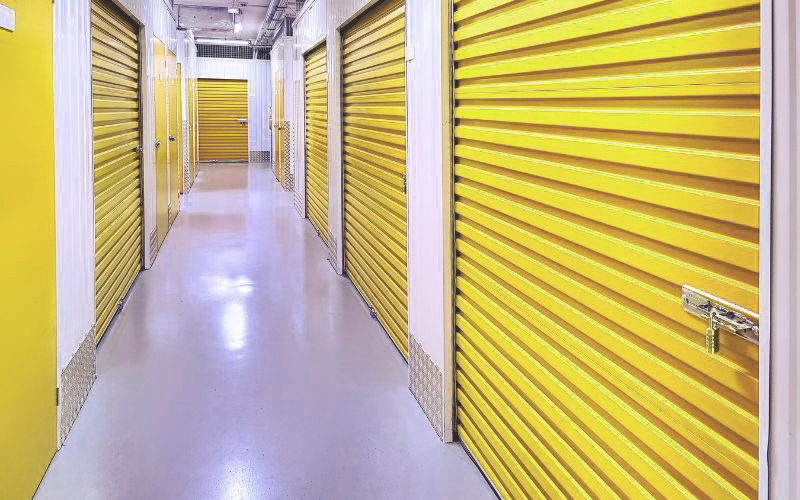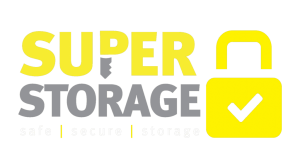Choosing the right storage unit size is essential to avoid paying for unused space or struggling with a unit that’s too small. Whether you’re moving, decluttering, or storing business inventory, understanding how much space do I need for self-storage? can save both time and money.
For example, Sarah recently moved into a smaller apartment and realised she had more belongings than space. She wondered, What size self-storage do I need? and wanted a unit that fit her furniture and seasonal items without overspending.This guide will help you determine the best unit size based on your needs, ensuring a practical and cost-effective solution.
Factors to Consider When Choosing a Storage Unit

1. Why do you need storage? Understanding the purpose behind your storage needs—whether it’s a move, an office relocation, decluttering, or an extended travel adventure—provides a preliminary indication of your overall space requirements.
2. What do you want to store? Your belongings’ size, shape, and fragility play a crucial role in determining packing strategies and spatial needs. Consider how items can be stacked and whether they require additional walking space around them.
3. How frequently will you need access? The frequency of access influences the choice of storage unit size. Items for infrequent use, such as seasonal decorations or tools, may be tightly packed. However, if regular access is anticipated, a larger unit might be more suitable to facilitate easier movement and organization.
4. What if you’re uncertain about the size? If uncertainty looms, take solace in the flexibility most self-storage providers offer, including Super Storage. The price difference between slightly larger units is often minimal, providing peace of mind. Moreover, these providers typically allow you to adjust your unit size according to evolving needs.
5. Duration of Storage
Short-term storage may require less space for temporary items, while long-term storage could involve more belongings, influencing the unit size you need. Plan accordingly to avoid paying for unused space or running out of room.
Storage Unit Sizes

Now, let’s talk about Storage Unit Sizes. Storage units in Stoke-on-Trent have different options, from small lockers to bigger garage-like spaces.
25 sq ft Unit:
- Comparable to a small garden shed or hallway closet.
- Suitable for holiday decorations, seasonal clothing, gardening tools, or approximately 60 medium boxes when packed strategically.
- Requires a small van for transportation.
50 sq ft Unit:
- Perfect for storing larger furniture pieces.
- Equivalent to a large walk-in closet or half the size of a single-car garage.
- Ideal for the contents of a studio flat or a small 1-bedroom space.
- Requires a transit van for moving.
75 sq ft Unit:

- Suited for a 1 or 2-bedroom flat.
- Accommodates 2 double mattresses, bed frames, bookcases, sofas, and large appliances.
- Necessitates a transit van, potentially requiring multiple trips.
100 sq ft Unit:
- Similar in size to an average single-car garage.
- Ideal for the contents of a 2-bedroom house or small business storage needs.
- Fits 2 large bed frames, mattresses, dining room furniture, sofas, and more.
- Requires a larger van, such as a box truck or Luton van.
125 sq ft Unit:
- It is suitable for 2-3-bedroom flats or medium-sized office items.
- Accommodates sofas, double beds, bulky furniture, dining sets, and office furniture.
- Necessitates a 7.5-tonne lorry for transportation.
Tips for Maximizing Storage Space
- Use shelving to organize boxes and smaller items: Shelving helps keep your storage unit tidy and makes it easier to access items without moving everything around.
- Disassemble furniture to save space: Break down beds, tables, and other large furniture to free up more room and make stacking easier.
- Stack boxes and items vertically: Take advantage of vertical space by stacking boxes and lightweight items, placing heavier ones at the bottom for stability.
- Label boxes for easy identification: Clearly label each box with its contents to save time when searching for specific items later.
- Avoid overpacking the unit to maintain accessibility: Leave some space for walkways so you can easily reach items without having to rearrange the entire unit.
Why Choosing the Right Storage Size Matters?
1. Saves Money – Renting a unit that’s too big means paying for space you don’t need, while a unit that’s too small may require renting additional storage.
2. Prevents Overcrowding – Choosing the right size ensures your items fit properly without being crammed, reducing the risk of damage.
3. Ensures Easy Access – A well-sized unit allows you to organise your items efficiently, making it easier to find and retrieve belongings when needed.
4. Maximises Storage Efficiency – Properly utilising space can help you store more in a smaller unit, saving costs while keeping everything well-organised.
5. Accommodates Future Needs – Selecting the right unit size with a little extra space can help if you plan to store more items later.
6. Protects Fragile Items – Overstuffing a unit increases the risk of breakage. Choosing the right size allows for safe stacking and better arrangement.
7. Improves Convenience – With the correct storage size, you won’t have to shuffle items around constantly or struggle to access stored belongings.
Tools and Resources
Choosing the right storage space can be challenging, especially when you’re unsure how much room your belongings will take. This is where tools like storage calculators or Space Estimator and inventory lists become invaluable. They help you visualize your storage needs, avoid overpaying for unused space, and ensure your items fit comfortably. For busy individuals and families, these tools save time, reduce stress, and provide peace of mind by offering a clear plan before renting a unit.
At Super Storage in Stoke-on-Trent, we understand the importance of making this process simple and accurate. That’s why we offer our Self Storage Space Estimator, a user-friendly tool designed to help you calculate the exact storage space you need. Whether you’re storing a few boxes, furniture, or the contents of an entire home, this tool takes the guesswork out of the equation. Simply input your items, and the estimator will recommend the ideal unit size for your needs.
Pair this with creating an inventory list to keep track of your belongings, and you’ll have a seamless storage experience from start to finish. At Super Storage, we’re committed to providing the resources and support you need to make storage hassle-free and efficient. Try our Self Storage Space Estimator today and take the first step toward organized, stress-free storage!
Read More: Tips to Store Handbags in a Storage Unit Without Damaging Them
Conclusion:
Choosing the right storage space size isn’t just about saving money, it’s about creating a stress-free, organized solution for your belongings. Whether you’re storing a few cherished items or the contents of an entire home, taking the time to assess your needs ensures you get the perfect fit. If you’re unsure, our storage experts are here to guide you every step of the way. Ready to find the perfect storage unit? Don’t wait, contact Super Storage in Stoke-on-Trent today for a personalized recommendation and let us help you store smarter!
FAQs:
1. How do I calculate the storage space I need?
Use tools like Super Storage’s Self Storage Space Estimator or create an inventory list of your items to determine the right unit size.
2. What size storage unit do I need for a 2-bedroom apartment?
A 10×15 or 10×20 unit is typically sufficient for the contents of a 2-bedroom apartment, including furniture and boxes.
3. How much does a 5×5 storage unit cost?
Costs vary by location, but a 5×5 unit typically ranges from 40to40to80 per month, depending on amenities and demand.
4. Can I change my storage unit size later if I need more space?
Yes, most facilities allow you to upgrade or downsize your unit based on availability and your changing needs.
5. What’s the cheapest storage unit size?
A small unit like a 5×5 is usually the most affordable, starting around $40 per month, ideal for a few boxes or small items.
6. Do storage facilities charge extra for insurance or security?
Some facilities include basic security in the cost, but insurance may be an additional fee. Always ask about included amenities and extra charges.
7. How can I save money on storage costs?
Choose the smallest unit that fits your needs, opt for long-term discounts, and avoid paying for unnecessary features like climate control if not required.
8. What happens if I rent a unit that’s too small?
You may need to rent a second unit or upgrade to a larger size, which could increase your overall costs. Planning ahead with tools like our Space Estimator can help avoid this.
9. Are there hidden fees in storage unit pricing?
Always ask about administrative fees, security deposits, or additional charges for features like 24/7 access or climate control.
10. Can I get a cost estimate before renting a unit?
Yes, most facilities provide free quotes. Use Super Storage’s online tools or contact us directly for a personalized estimate!




